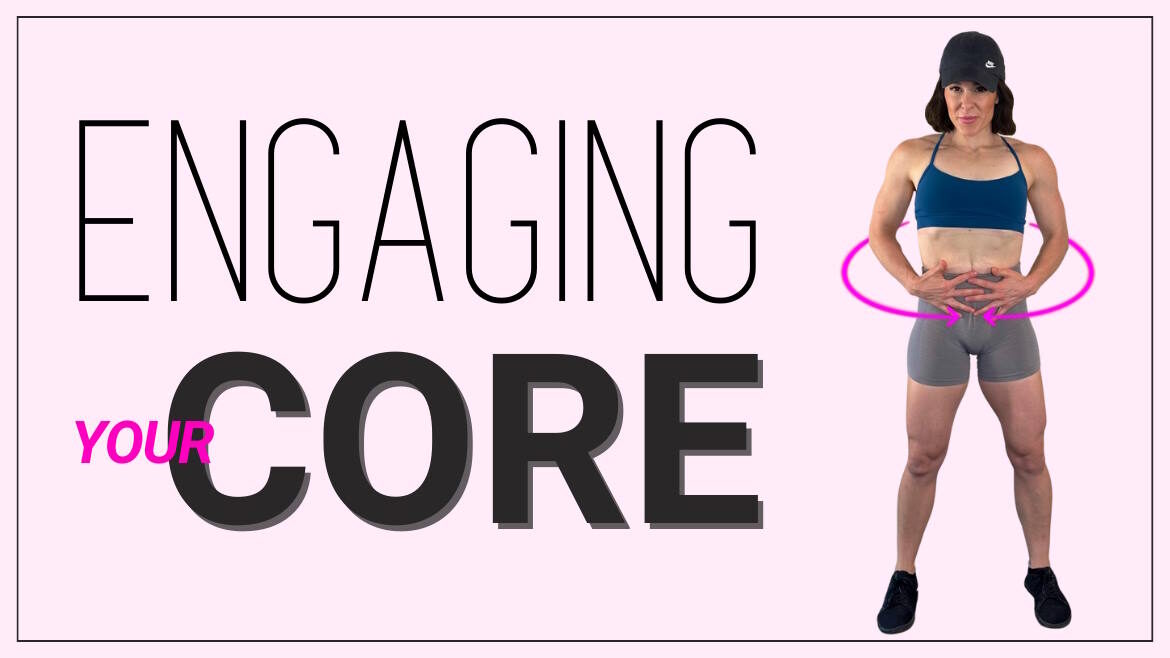You’ve probably felt the need to suck in your stomach at some point. Thanks to society’s pressure to be skinny, “bouncing back” after baby, or because your diet-obsessed mother-in-law said so.
Over time, sucking in becomes a habit – with negative consequences. Sucking in means you’re not engaging your core muscles properly. This can lead to a host of problems, including back pain, breathing problems, pelvic floor dysfunction, and incontinence issues.
STOP SUCKING IN. Instead, let’s learn how and when it is best to engage your core.
Sucking In vs. Core Engagement
Your rectus abdominis, or six pack muscles, tend to get all the attention. But that, literally, is just the surface.
Many of us spend so much time trying to suck in for a flat belly that we’ve lost touch with how to properly engage our core muscles.
Sucking in, or stomach gripping, often and for an extended period, can lead to what’s known as “Hourglass Syndrome.” Your upper ab muscles become tight (hypertonic), and your lower abdomen muscles become weak and underused.
Sucking in also restricts your body’s ability to breathe well. Your diaphragm learns to contract in the opposite direction. This pulls your ribs up rather than down to create space for your lungs to inhale.
Core engagement, on the other hand, has many impacts and benefits. Your abdominal muscles support your spine and pelvis and their mobility.

Building a Strong Core
To build a strong core you need to focus on the transverse abdominis (TVA). These are your deepest layer of ab muscles and run laterally around the body to form a natural corset. The TVA play a critical role in supporting and stabilizing your entire core and spine. They help prevent back pain, reduce the risk of injury, and support your pelvic floor muscles, among other things.
Activating your TVA muscles, or engaging your core, is especially important once you’re postpartum. Your body may still be healing, so practicing core engagement can prevent back pain or injury as you lift, carry, and handle the tasks of everyday mom life.
How Do I Know If I Am Engaging My Core Correctly?
Imagine getting into a cold pool or pulling on a tight pair of jeans. Without thinking about it you’ll take a big inhale and exhale, tightening your abdominals and engaging your core.
Don’t hold your breath! Practicing engaging your core starting with proper breathing. With time, it will become second nature. Try it:
- Start by laying on your side. This removes gravity from the equation.
- Place your hand on your ribs and inhale deeply through your nose. You should feel your ribcage expanding, like an umbrella, and overflow air going down into your belly. You don’t want your shoulders to rise.
- As you exhale, think of pulling your belly button toward your spine and up, like you’re zipping up your abs.
Exercises to Improve Core Engagement
Try the following exercises to strengthen and improve core stability. See how well you can engage your core throughout the workout.
Heel Slides
- Lay on the floor with knees bent and feet flat.
- Extend one leg straight out. Inhale through the nose, down into your ribs and tummy.
- Exhale slowly through your mouth as you slowly drag the heel back in toward your bottom.
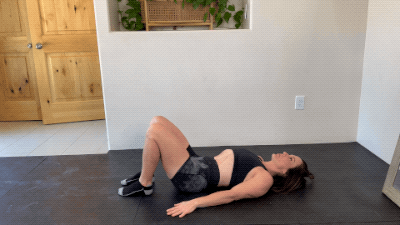
Side Plank
- Lean onto your side. Stack the shoulder, elbow, and wrist so they’re aligned. Legs can both go out to the side. To modify, use the top leg as a kickstand, bent and in front of the other leg.
- Inhale through the nose, down into the body, and set your core.
- Exhale as you lift your hips, creating a line from your head to hips to feet. Use several small exhales to keep the core engaged as you hold the side plank.
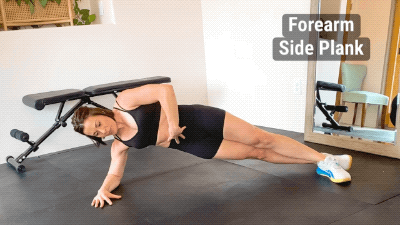
Dead Bug
- Lay on your side, and then roll over to your back. Keep your knees bent and legs lifted at a 90 degree angle. Inhale through the nose down into the ribs and tummy.
- Exhale as you extend one leg out and the opposite arm out, behind you. (Only go as far as you are able without arching your back or flaring your ribcage.)
- Inhale as you pull your arm and leg back in. Repeat on the opposite side.
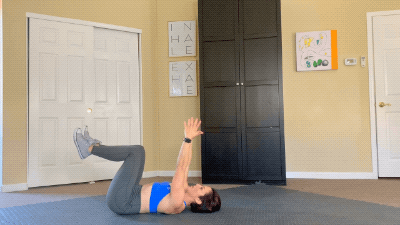
Bridge with Ball Squeeze
- Grab a Pilates ball or throw pillow, and roll from your side onto your back. Lay on the floor with knees bent, holding the ball between them.
- Inhale through the nose and let your breath go down into ribs and tummy.
- Exhale audibly out your mouth as you lift your hips and gently squeeze the ball with your knees.
- Inhale again as you lower your hips. Repeat.
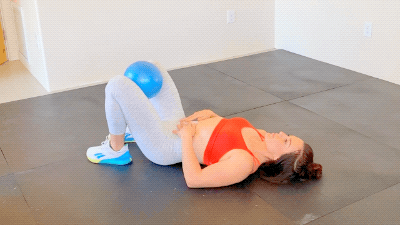
The next step is to incorporate proper breathing and core engagement into regular, daily activities of living. Breath is our hidden superpower!
Should I Engage My Core All of the Time?
In short, no. It’s not good to have tight muscles all the time.
Instead, think about the task at hand. Your level of engagement should match the level of exertion. For example, if you need to lift a heavy box off a shelf, you should engage your core more deeply than you would to pick up a pillow.
Is Engaging My Core the Same As Flexing?
Again, no! Flexing and engagement require two different types of activation. When you flex your core muscles, you’re just gripping the rectus abdominis or “six pack” abs. This is how you would show off your six-pack muscles, but does little to active the deep core muscles. Engaging involves your entire core from the pelvic floor on up.
Should I Engage My Core While Walking?
It is not necessary to engage your core while walking – it can interfere with your natural breathing pattern. It can also overwork your core muscles or cause other issues.
How Do I Engage While Lifting?
As you prepare to lift (a weight during a workout, or just in everyday life), inhale on the prep. Exhale on the exertion.
Benefits of Engaging Your Deep Core
A strong core helps improve balance and stability, lowers the risk of injury, and supports your spine. Engaging your deep core instead of sucking in has many benefits:
- Improves intra-abdominal pressure and supports your pelvic floor.
- Prevents poor posture.
- Decreases a low belly pooch (naturally leading to a flatter looking stomach).
- Helps with and minimizes incontinence and constipation. Proper breathing and engagement massage your insides.
- Proper breathing and core engagement has even been shown to decrease anxiety.
Your body shape is nothing to be ashamed of. But if you are ready to practice better core engagement check out the FREE Core Guide. All of this and more is covered throughout the Strong Like A Mother programs.
